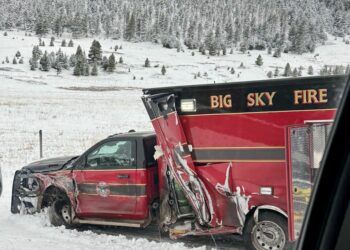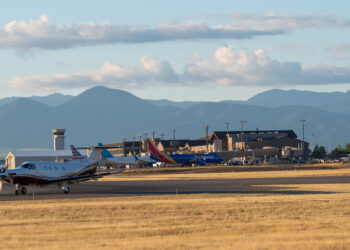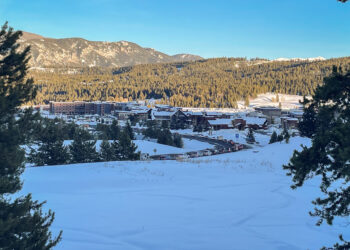Experts, locals and visitors contemplate the future of some of the West’s most iconic wildlife
By Mike Koshmrl WYOFILE.COM
This is the second installment in a two-part story. Read part I here.
GRAND TETON NATIONAL PARK – All eyes have been on famous Grizzly Bear 399 and her four cubs this spring as they emerge from a winter’s rest and into a potentially more dangerous world than the one they fell asleep in.
The cubs, now separated from their mother since May 12, as reported by the Jackson Hole News & Guide, have been conditioned to find food in areas of high potential human conflict. Recent data shows that Wyoming wildlife management has trended further in the direction of killing problem grizzlies over relocating them, a reality that could potentially bode ill for the cubs.
Wyoming Game and Fish intends to take the lead in managing grizzly 399 and her offspring if and when those bears depart Teton Park this year. That’s a departure from 2021, when the state agency pulled back its on-the-ground management during the family group’s extended stay in southern Jackson Hole. The federal government dispatched its own wildlife officials instead, running up a big bill in the process, according to Fish and Wildlife Service’s grizzly bear recovery coordinator Hilary Cooley.
“We spent $60,000 last year, the Fish and Wildlife Service in Jackson,” Cooley said. “We can’t do that, and we shouldn’t. We’ve got 2,000 bears in the Lower 48 states.
Calls for a different tack
Ardent grizzly 399 admirers feel otherwise. The extraordinary sow—the oldest-known female with cubs alive today in the Greater Yellowstone Ecosystem—is widely considered an ambassador of her species, and she’s a force attracting legions of tourists who bolster the local economy. Fans argue that the famous bear, her progeny and other habituated, roadside grizzlies do deserve continued special treatment.
“The bears are the draw, in my opinion,” Rochester, New York photographer Tom Knauss said while watching the bears from the road shoulder in Grand Teton National Park May 4. “The peaks are nice and all that, but people come to see the bears—they really do.”
“To euthanize them,” he said, “would be a big mistake.”
Knauss called for the Park Service to “rethink” what it takes to keep bears with grizzly 399’s bloodlines alive. Officials could strategically place road-killed ungulate carcasses in the national park, he said, to dissuade their departure. That’s an idea his partner, Ricki Swanson, thought was wise.
“We feed the damn elk on the [National Elk Refuge] to keep them out of town,” Swanson said. “All the things they say they can’t do because it’s not natural, they’re already doing.”
Knauss and Swanson were not ready to write grizzly 399’s four 2-year-olds off, but other roadside spectators took a dimmer view of the youngsters’ prospects.
Roadside grizzlies should be managed to preserve viewing opportunities for the public, Alpine resident Walt Ackerman said. “They should be considered golden ambassadors of their species,” he said, “and that should transcend boundaries and transcend agencies.”
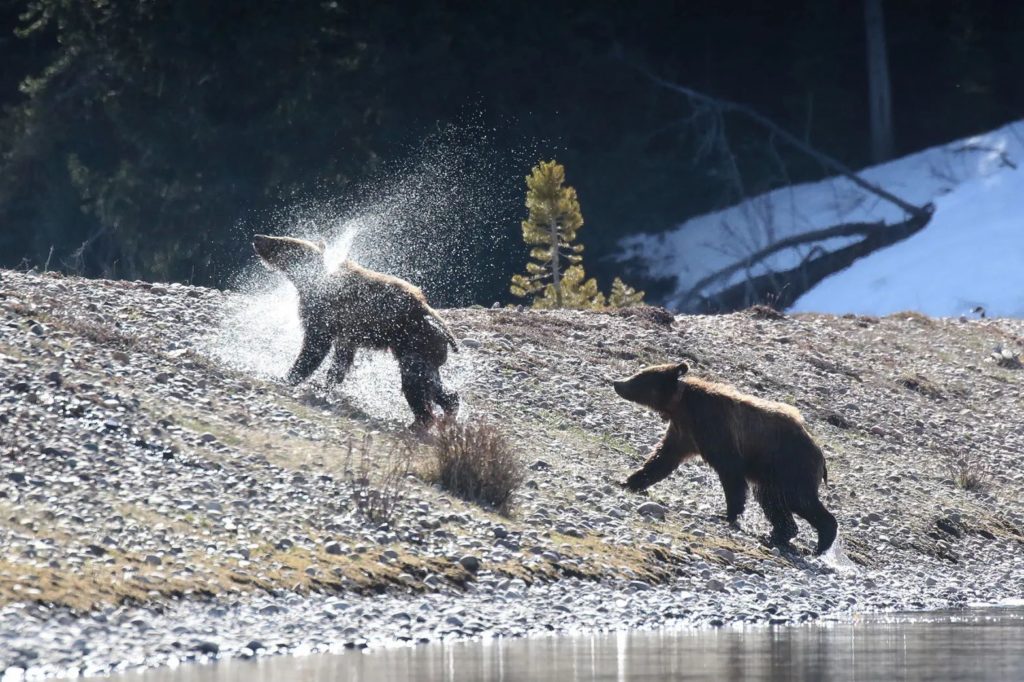
He recognized that’s not the reality, however.
“They’re doomed,” Ackerman said of the subadults. “And the reason they’re doomed is because the U.S. Fish and Wildlife Service and the park—and this is my opinion—has made it obvious that they’re trying to kill the next generation of roadside bears.”
Interagency Grizzly Bear Study Team data suggests that grizzly 399 descendants, which learn to tolerate people, fare poorly relative to most grizzlies, Thompson said. Research focused on the Northern Continental Divide Ecosystem’s grizzlies shows that survival increases steadily with age: 61 percent of cubs survive their first year out of the den, while 68 percent of yearlings monitored make it through year two. By the subadult life stage, annual survival rates spike to 85 percent and some 95 percent of adult grizzlies survive any given year, according to the research.
A study team “parentage analysis” suggests there are “16 to 17” individuals that are “known or likely offspring” of grizzly 399, not counting her current litter, Thompson said. Of those bears, five were captured and killed as a result of conflict—most recently, Grizzly 962, a 4-year-old female from world-famous sow’s previous litter. Two more grizzly 399 cubs were killed by vehicle strikes. “One to two” more died from undetermined natural causes, he said.
Only four of grizzly 399’s known offspring that have been captured—less than a quarter—have no known conflict history, Thompson said. Four more were captured and relocated as a result of conflict. Three of those bears whereabouts are unknown, he said, and the fourth, a female from the same litter as 962, is now a problem bear that’s frequenting residential areas in Red Lodge, Montana.
“What’s going on [with grizzly 399], it’s not a good scenario for her and for other bears,” Thompson said. “Having grizzlies walking through downtown Jackson doesn’t help grizzly bears as a whole.”
Cause for optimism
Red Top Meadows resident Cindy Campbell, a longtime grizzly bear activist, said she’s focusing her energy on the silver linings of the grizzly 399 clan’s wanderings. The five-grizzly family, she pointed out, more or less beelined it for ranchland in southern Jackson Hole after emerging from the den over Easter weekend. There were no reports, she said and Thompson confirmed, of the grizzlies getting into human-related foods.
“Let’s celebrate small victories,” Campbell said. “Maybe it’s not so small that her and her family just spent however many days in the [southern] Jackson Hole valley with zero conflicts.”
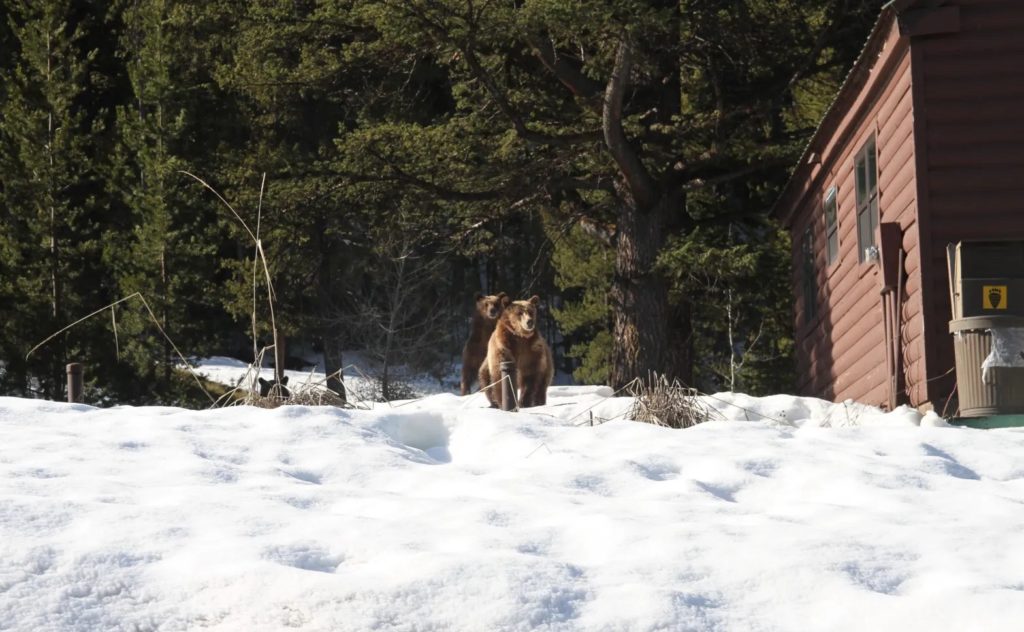
Another cause for optimism Campbell perceived was increased public awareness and a policy shift. Grizzly 399, she said, has been a catalyst for change, encouraging residents to tuck away bear attractants and motivating the Teton County Board of Commissioners to require bear-proof trash cans and dumpsters throughout Jackson Hole.
“Grizzly 399 came through town on a white horse and said, ‘This is screwed up, that’s screwed up,’” Campbell said. “And in the last year, our community stepped up, to a certain degree.”
There’s a new initiative, Jackson Hole Bear Solutions, that’s providing free bear-resistant trash cans, livestock feed containers and electric fencing to residents who request it. Ackerman, the Alpine resident, helped get that program off the ground, convincing the nonprofit Wyoming Wildlife Advocates to take it on.
“It’s an effort to try to solve some of the problems,” he said. “It’s better than doing nothing, and nobody was doing anything.”
Mangelsen, meanwhile, is also contributing to the chorus calling on wildlife managers to change plans for handling the subadult grizzlies once they strike out on their own. The fivesome’s behavior, he contended, should not necessarily be construed as “conflict,” just because they access human goods left out for the taking.
“It used to be like three strikes,” Mangelsen said. “Saying we’re not going to tolerate one strike now, that’s a pretty lousy way to manage a species on the endangered species list.”

But Thompson said the problem-bear policy was never so simple. Relocation is never predetermined, he said, and there’s no concrete number of grizzly bear blunders managers condone—even if their tolerance of missteps has diminished.
“Twenty years ago you could maybe move a bear, even within the recovery zone, and it could find a vacant home range to make a living as a young bear,” Thompson said. “But the likelihood of that now is very low.”
Wyoming’s large carnivore manager repeated his preliminary plans for grizzly 399’s offspring.
“If any of those bears are involved in a conflict involving food-rewards or something like that,” Thompson said, “I do not feel it’d be appropriate to relocate them.”
EDITOR’S NOTE: The Jackson Hole News & Guide reported that as of May 12 grizzly 399 and her cubs have started to separate. The News & Guide on May 13 reported that one of grizzly 399’s male cubs was hazed in the Solitude subdivision.







